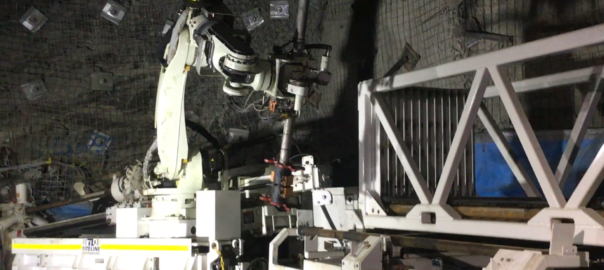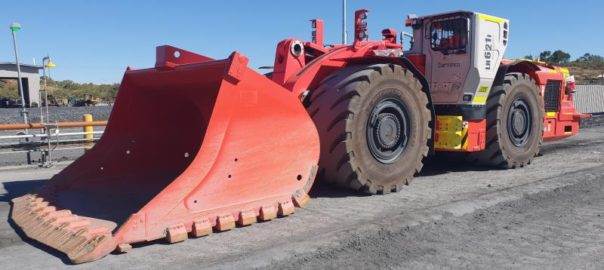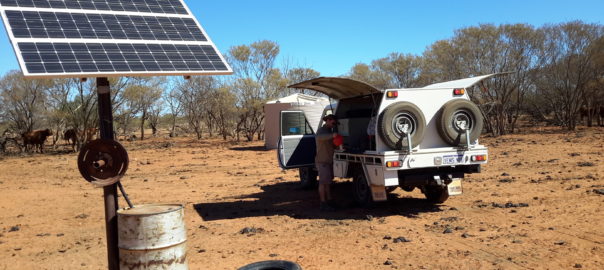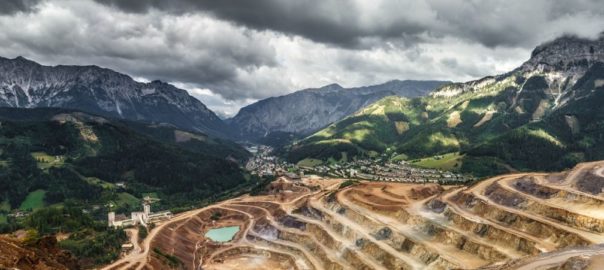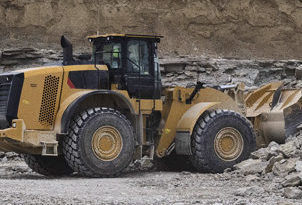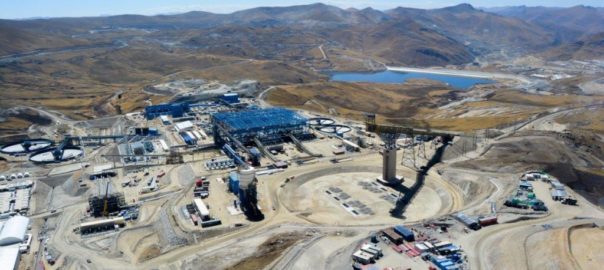In looking to retain the mantle of Australia’s safest drilling company while expanding into the underground mining sector, Titeline Drilling has found support from some of the biggest miners in the world.
The company has long been viewed as a leading surface mineral exploration drilling contractor but, as David D’Astoli, CEO of Titeline, explained, this type of work is subject to cyclical exploration budgets.
“The rationale for moving into the underground market was to try to get some ‘lumpiness’ out of our income stream,” he told IM. “As you know, with exploration, it can be pretty up and down. With the underground side, our work is a lot closer to the production side of the business; we’re doing grade control and resource development work in long dated (four to five years) contracts.”
Titeline was looking for consistency and resilience even in market downturns.
To enact this change, the company employed a new General Manager of Underground, Greg Wythes.
Wythes, who had a background in underground drilling in Australia having worked at the likes of Newcrest Mining’s Cadia and Rio Tinto’s (now CMOC’s) majority-owned Northparkes mine, was aware of the pain points the industry was feeling and sought about creating a unique value proposition for the new underground contracting division.
The contract the company bid on – and consequently won – for MMG’s Rosebery mine in Tasmania, Australia, provided just that.
MMG, in a blog post, explained that brief.
“When Rosebery was looking to award the contract for underground drilling services in 2017, all tendering companies were asked to supply a hands-free solution for drill rod handling, in-line with our vision for an injury-free workplace,” the company said.
“The successful company, Titeline, was the only tender that presented a viable solution to hands-free drill rod loading and unloading.”
Titeline – having fitted Boart Longyear rod handlers to their drills that “present the rod in an ergonomic position so the drill assistant can get it and stack it away”, D’Astoli says – knew such a solution could be developed, in theory, but had to search for the right suppliers and solutions to prove it could work in a real-world underground environment.
The Boart Longyear rod handler, along with a rig able to move and set up quickly, drill from +90 to -90 degrees and to depths of 1,500 m, immediately proved productive at Rosebery.
“The brief was to ensure the drills on site were performing before starting their hand-free proposal, and, within six months of commencing their contract, Titeline’s in-house designed drill rigs outperformed the previous contractor,” MMG said.
Yet, the company needed to automate the rod handling process further to fulfil the brief.
This is where the potential of robots came into view.
“These robots were already in the manufacturing industry – which aren’t exactly pristine environments – and were able to operate without an issue,” D’Astoli said. “They were also being employed on sea walls where they were constantly doused with sea water and continued to operate.”
Robot technicians were happy to provide conservative estimates of only having to service these robots every six months in the underground environment, according to D’Astoli. This provided the peace of mind that maintenance issues were not going to knock productivity off-line.
It cemented a relationship with a robotics company in Melbourne, Victoria, not too far away from its Ballarat base, and gave the company the robot drilling brief.
Boart Longyear provided access to the drill rig interface, the DCI control panel.
This year-and-a-half long process led to the development of a world first for underground diamond drilling: a drill and ancillary rod buggy carrier able to drill unattended and perform an autonomous rod trip (pulling the drill string out of the drill holes and then running it back in).
Able to work in confined environments, and drill 360° on azimuth and from -90 degrees to + 90 degrees in dip, the solution was presented to a global audience at the Prospectors and Developers Association of Canada’s annual exploration event earlier this year.
Meanwhile, MMG and Titeline had started commissioning the first rig at Rosebery, and one of the world’s biggest gold miners was putting the rigs through their paces.
Titeline, which already has an existing grade control and resource definition contract at Newmont’s Tanami gold mine, in the Northern Territory, has provided six rigs to the miner, two of which are equipped with the new drill and ancillary rod buggy carrier. More of these robotic rigs will be arriving at the operation by the end of the year.
Modifications to these rigs continue to take place, but the three currently in place at Rosebery and Tanami are very much “producing”, D’Astoli explained.
“We have been making some changes to the programming, to the safety circuit, the laser circuit, etc, but they’ve been performing well,” he said. “We’ve even drilled a few hundred metre shifts with one of the robot rigs.”
He provided some colour to this performance: “The rod pulling process is at least as quick as it is with the Boart Longyear rod handler and is a lot more consistent as you are taking the human element out of it.
“The existing rigs across the underground industry, whether they have total manual handling or are using the Boart Longyear rod handler, still need a drill assistant or driller in there plucking the rod out of the rod handler and putting it away. That can get tiring.”
Accidents can happen when this tiredness occurs.
“The robot will, in the end, always be that bit quicker, as it is consistent over a longer period of time and never gets tired,” D’Astoli added.
Shift change opportunities
The automation elements on these drill rigs are not only removing personnel from the danger zones, they are also providing a productivity boost.
D’Astoli feels the value driver comes with being able to drill throughout shift changes and other times where manual drilling would normally have stopped.
“One of the biggest impediments to production in the underground environment is how many hours you can drill in a 12-hour day,” he said. “Quite often it is a lot less than you think. That can be due to ventilation issues, water issues, dewatering issues, heat, etc.
“The biggest improvement from a productivity point of view available to us is being able to drill and pull rods between shift changes, crib breaks and those types of things. Or, if the ventilation system goes down, personnel will move away from the area, and allow the drill to drill autonomously. That is where the productivity gains are going to come from.
“All of this leads to being able to drill more hours over a shift.”
The company is not finished automating, though, with D’Astoli saying it intends to further leverage this robotised drilling and rod pulling ability.
“With Wi-Fi in the mines, it is at the point where you could be able to take that to the next level and have someone sitting on the surface controlling the rig,” D’Astoli said.
“Or, you might have a similar application to the way semi-autonomous underground boggers (LHDs) work in a block cave mine, where the operators are in a controlled environment and one operator might be operating three boggers at a time.”
That is some way ahead.
For the time being, the company is focused on switching out all of the manual rigs it has delivered to Rosebery and Tanami with the semi-autonomous ones.
Each new rig is a large undertaking for the company, with the learnings from Rosebery to Tanami – and vice versa – reflected in every build.
This is where being aligned with major companies such as Newmont and MMG comes in handy.
“MMG have been very understanding of the process we are going through,” D’Astoli said. “They came and visited us in Ballarat, pre-COVID-19, to see how we were getting along. Newmont have been exactly the same; very supportive giving us the time and space to deliver.”
Major attraction
While the PDAC debut excited lots of attention, D’Astoli is keen to foster the relationship with these two companies further, in addition to aligning with other major companies – and major mines – in the future.
“They’re the ones that probably own the bigger, lower-cost mines, which is where we want to be,” he said. “It is those orebodies that demand the amount of drilling where it makes sense to automate as much of the process as possible,” D’Astoli said.
“When you set up these long-term contracts to deploy such technology, you want to make sure the mine has a long life ahead of it and the owner is not going to be chopping and changing the budget from year to year.”
Asked whether the wider industry is willing to pay for such innovation, D’Astoli was resolute in his answer.
“For a company really focused on safety, they are not going to be knocked out by the price of this solution,” he said.
Surface safety
This is not all Titeline is interested in at the moment.
Titeline has to this point in its underground automation journey been helped along the way by Chile-based Exploration Drill Masters (EDM).
EDM, which Titeline owns 50% of, has been fabricating the frames and other components for these new rigs before they head to Australia for final assembly.
But the Santiago-based company is working on a new development of its own.
Its patent-pending EDM rod-feeder system for handling drill pipe has been used across the globe as an add-on to existing fleets, many of them being used on Titeline rigs.
D’Astoli says operators can park this solution up behind any top drive drill rig in Australia and remove 90% of the manual handling risks that come with the handling of diamond drill pipe to and from the drill string.
The EDM Mark I has already achieved this, but Mark II will further improve this solution, providing a bridge between manual handling and full hands-free solutions, he says.
“The national fleet in Australia mainly consists of top drive drill rigs and there is no real hands-free solution on the market that does not currently affect the productivity of these rigs in the majority of applications,” he said.
“The EDM Mark II rod feeder fills the gap while a new, hands-free solution is being developed.”







